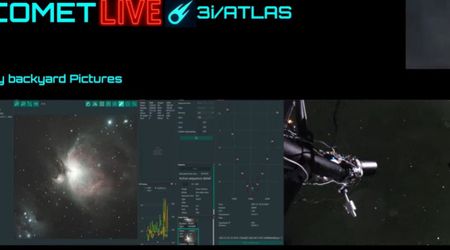Upcoming Planetary Opposition Dates

Planetary oppositions constitute the best time to observe the planets with your telescope or binoculars. The phenomenon, characterized by a planet's direct alignment with Earth and the Sun, heralds the optimal conditions for planet-gazing, revealing our solar system neighbors in their fullest brilliance.
The buzz around these occurrences is clear on social media platforms like Instagram, Facebook, and Twitter, where stunning images of the planets in opposition are commonly shared.
If you're interested in witnessing these astronomical events firsthand, then you are in the right place as I am listing the next opposition date for each of the planets in the solar system below (including Pluto!).
Table of ContentsNext Mars Opposition Date
Mark your calendars for this captivating celestial spectacle, slated for Wednesday, 15th January 2025 at 18:32 PST (02:32 UTC). The Red Planet will be prominently placed in the constellation of Gemini. With a brightness of magnitude -1.4 and an angular size of 14.5", Mars can be pinpointed at a right ascension of 07h54m50s and a declination of 25°10'N. Distinctive features that can be observed with a telescope: its characteristic red color, surface features like polar ice caps, and when dust storms aren't obscuring them, dark regions and vast, flat plains.Countdown to the next Mars Opposition
00Days 00Hours 00Minutes 00Seconds
Additional resources
- How to Observe The Red Planet With a Telescope
- How Far Away Is Mars From Earth Right Now?

Next Jupiter Opposition Date
This magnificent display of Jupiter's enhanced brilliance is scheduled to unfold on Thursday, 2nd November 2023 at 21:55 PDT (04:55 UTC). This giant planet, nicknamed the godfather of the solar system will boast a brightness magnitude of -2.9 and a substantial angular size of 48.4". It will be positioned at a right ascension of 02h32m50s and a declination of 13°31'N. Distinctive features that can be observed with a telescope: The great read spot, cloud belts, the Galilean moon, and distinct coloration and bandings.Countdown to the next Jupiter Opposition
00Days 00Hours 00Minutes 00Seconds
Additional resources
- How to Observe Jupiter With a Telescope
- How Far Away Is Jupiter From Earth Right Now?
Next Saturn Opposition Date
This remarkable astronomical event will unfold in the early hours of Sunday, 27th August 2023, precisely at 01:20 PDT. Saturn, with a brightness of magnitude 0.4 and an angular size of 19.0", will be located at a right ascension of 22h24m10s and a declination of 11°52'S. Make sure to mark this date, as it provides the perfect chance to witness the glory of the ringed planet in its full splendor.
Distinctive features that can be observed with a telescope: its iconic rings, the Cassini division, the Saturnian moons Titan, Rhea, Tethys, Dione, and Enceladus.
Countdown to the next Saturn Opposition
00Days 00Hours 00Minutes 00Seconds
Additional resources
- How to Observe The Ringed Planet With a Telescope
- How Far Away Is Saturn From Earth Right Now?

Next Uranus Opposition Date
On Monday, November 13, 2023, at 09:12 PST or 17:12 UTC, Uranus will be at opposition. The ice giant will be located in the constellation of Aries, with a right ascension coordinate of 03h13m30s and a declination of 17°37' North. Uranus will have a brightness of magnitude 5.6, which will make it relatively visible under good viewing conditions. The apparent size of the gas giant from Earth, known as its angular size, will be measured at 3.8 arcseconds. What will you see in your telescope: a small, blue-green disk. Uranus' moons are challenging to see from Earth, even in opposition, due to their distance and dimness.Countdown to the next Uranus Opposition
00Days 00Hours 00Minutes 00Seconds
Additional resources
- How to Observe Uranus With a Telescope
- How Far Away Is Saturn From Earth Right Now?
Next Neptune Opposition Date
On Tuesday, September 19, 2023, at precisely 04:09 PDT (11:09 UTC), the distant planet Neptune will make its appearance in our sky. The cerulean prince of our solar system, Neptune will be found resting in the constellation of Pisces, known traditionally as the Fish. Its specific location will be determined by a right ascension of 23h47m00s and a declination of 2°47'S, indicating its position in the southern part of the celestial sphere. Despite its far-off residence in the solar system, this icy giant will have a magnitude of 7.8, which, while faint, can be observed with a suitable telescope under good sky conditions. Neptune's angular size at this time will be measured at 2.4 arcseconds. While this might seem small, remember that we're looking at an object billions of kilometers away from us. That we can observe Neptune at all is a testament to amazing advancements we've made in astronomical observation. What will you see in your telescope:: Neptune also appears as a blue disk, albeit smaller than Uranus due to its greater distance from Earth. Its moons, including Triton, are typically too dim and too distant to be seen with all but the most powerful amateur telescopes.Countdown to the next Neptune Opposition
00Days 00Hours 00Minutes 00Seconds

Next Pluto Opposition Date
On Saturday, July 22, 2023, at 05:23 PDT (12:23 UTC), skywatchers will have an opportunity to spot Pluto, the dwarf planet that lies in the distant, chilly outskirts of our solar system. It will be positioned in the constellation Capricornus, known as the Sea-Goat in mythology. Its precise celestial coordinates will be defined by a right ascension of 20h07m30s and a declination of 22°57'S. As for visibility, Pluto will register a magnitude of 14.9. Given its distant location from Earth and its small size, Pluto will necessitate a powerful telescope to be visible, as its light will be dim compared to many other celestial bodies. Distinctive features that can be observed with a telescope: Unfortunately, Pluto is way too far and way too small to offer any distinctive features in a telescope, It will most likely just look like a point of light for most amateur astronomers.Countdown to the next Pluto Opposition
00Days 00Hours 00Minutes 00Seconds

Planets are a popular observing target among amateur astronomers. Contrary to popular belief, telescopes are not always required to observe them.

Picture a star, swiftly darting across the sky, leaving a streak of light in its wake – a mesmerizing sight, isn’t it? This spectacle, magnified countless times, forms the cel

We'll delve into the world of lunar eclipses, and then we'll explore the upcoming calendar of these celestial events.

There are many beautiful objects in the night sky including stars and planets. But, which planets are the brightest in the night sky?









